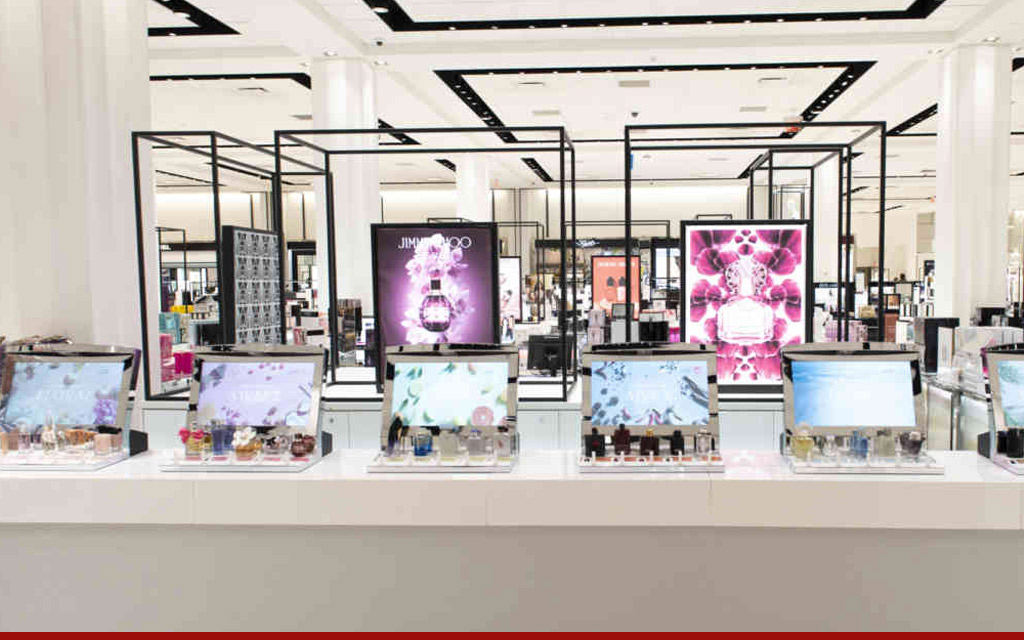What is it about beauty that has resonated so much during the pandemic? Even in a year with face masks on and all of us sheltering in place, beauty was one of the leading categories in e-commerce. While lipstick sales may have been down because of the risk of mask mess, eye makeup and self care products went way up. Beauty is thriving, and that matters no matter how you think about your own gender or what you do.
So why is beauty a bellwether for a new kind of commerce, both instore and online?
It boils down to this, says Deborah Weinswig, CEO of Coresight Research, in a panel I recently moderated at a beauty industry event: “Wall Street wants to see revenue and customers want to have experiences.” Those two goals converge, shall we say, beautifully, in the beauty industry. It has created a perfect storm, in which technology, a thirst for new experiences, and an influencer culture of experts and celebrities meet. And beauty companies continue to innovate by seamlessly integrating technology with a heavy dose of discovery.
Weinswig gave me the 30,000-foot view of the ecosystem that is allowing beauty commerce to flourish. It includes a mashup of virtual try-ons, contactless sampling, tutorials and masterclasses, livestreaming, QR codes and livechats. Top beauty manufacturers and retailers are going all in on experience, combining and recombining these elements to create robust engagements.
“Virtual try-ons”, says Weinswig, “are sustainable and lead to product discovery.” It’s easy to swipe through thousands of try-on lip colors or foundations without wasting a drop of real product and in half the time. Neutrogena offers app-based skin analysis and is rolling out a new try-on app for color foundations. The app lets you try on different foundation products using your camera, in augmented reality, right on your screen on an image of yourself. Color cosmetics are having a try-on field day online. “Expression of self”, says Kerry Sullivan, vice president of Marketing at Neutrogena, “will triumph again”.
One undeniable benefit of the pandemic is that QR codes became almost a way of life. The beauty industry then took advantage of the shopping public’s newfound skill with this technology. Remember how you could never read the 3 point typeface on the packaging of a product? Now, using QR codes, you can easily and quickly learn a product’s ingredients and how to best apply it. Small thing, big difference.
Livestreaming has turned out to be both a source of additional income for talent and celebrities as well as a way to educate consumers on products. Online sales people are being retained to offer everything from consultations to application tutorials and masterclasses. Charlotte Tilbury’s website saw sales rise after it began hosting virtual consultations and livestreams. And according to money.co.uk, many of the top performing videos under #smallbusiness on TikTok were beauty videos (with jewelry second, and fashion third).
Retail is teching-up too. Contactless sampling at retail has become indispensable. Trevor Summer, CEO of Perch Interactive, creates in-store displays that provide customer engagment and a contactless way to shop. “Digital transformation will be used at retail because that’s where 85% of beauty shopping typically occurs,” says Summer. Perch uses computer-vision-based kiosks that can sense and report on which products people are engaging with. One of those kiosks, at Macy’s fragrance bars, asks you take a quiz about your personallity, which then leads you to what might be your perfect perfume. When you touch the bottle, information about it appears on a screen. And with that touch you let each product tell it’s own story on the large display. Companies like UltraLeap are working on haptic interactions with beauty products so that you can do things like squeeze your fingers together to activate a whiff of perfume or use hand gestures to move through screens of product.
All of this is measurable, says Summer. “When you start instrumenting in-store clicks, magical things happen,” he explains. Brands can see a 50 to 100% sales uplift per SKU. “Everyone gets what they need when digital tools enhance the in-store shopping experience. The retailer wins with greater category lift and data capture; brands win by differentiating their products and gaining greater exposure; and the customer wins with more personalized, better choices.”
And e-commerce beauty sales went through the roof in 2020, up nearly 35%. “We saw e-commerce really play out in the beauty field, especially with the launch of DTC [Direct to Consumer] services,” says Weinswig. Not unexpectedly, her forecast for 2021 and 2022 shows a flattening of online with a return to retail. But the pandemic lesson learned is that you’ve got to be digital in both places.

A summary of Deborah Weinswig’s takeaways. It will be presented on June 9th as WeCosmoprof.
Source: https://techonomy.com/2021/05/beauty-goes-digital-offline-and-on/




